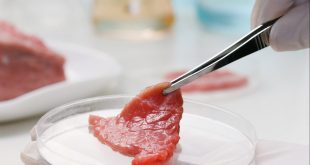By Nathalie Dreifelds
In Leamington, Ont., the greenhouse capital of North America, approximately 6.8 million kg pounds of edible tomatoes and 5.4 million kg of cucumber grade-outs are discarded annually.
It’s just one example in a new report by the Lincoln, Ont.-based Vineland Research and Innovation Centre that suggests fruits and vegetables are missing out on the value-add of waste produce, not the least of which is the impact on the environment.
“The greenhouse tomato and cucumber sector, along with fruit and vegetable processing, have ample volumes of underutilized streams,” says the study’s lead, Alexandra Grygorczyk, Vineland’s Research Scientist, Sensory & Consumer Services. “These have potential, when managed differently, to help organizations reach environmental sustainability targets and generate better returns from value-added products.”
Approximately one-third of the food produced in the world for human consumption is wasted. Among these, fruits and vegetables have the highest wastage rates with 40% to 50% of products produced being thrown away, according to the United Nations’ Food and Agricultural Organization.
In Canada, approximately 74% of produce is wasted before it reaches consumers, a total of nearly six million metric tonnes of fruit and vegetable waste. Two-thirds of this waste is categorized as avoidable waste, the result of operational or market factors such as a breakdown in seller-buyer relationships, an oversupply, or excess food that wasn’t donated due to a vendor agreement.
One-third of that total, considered unavoidable because of current processing and grading standards, generates expenses for producers and processors who must dispose of it in landfills, ship it to neighbouring livestock farms or allow it to decompose on unused plots of land.
The report, titled Underutilized byproduct streams from the Canadian horticulture value chain, suggests that these massive amounts of wasted yet potentially edible products could be reduced or eliminated by changing management practices to retain value in the byproducts streams and transform the waste products into new products or divert them to industries better suited to transforming them.
Besides the economic factor, changing local regulations and an increasing focus on environmental sustainability are driving interest in finding new solutions to managing by-product streams.
To tackle this issue and help increase the industry’s environmental sustainability, Vineland examined underutilized waste streams for the top seven Canadian produce crops (potatoes, apples, field tomatoes, greenhouse tomatoes, greenhouse cucumbers, onions and carrots) and identified the range of opportunities for managing these.
“We interviewed over 40 companies across the horticulture and food value chain to identify underutilized byproducts, better understand trends driving product formulation, and find gaps in the ingredient market that could be filled through the transformation of waste,” says Grygorczyk. “We found not all sectors have similar levels of waste ,although those producing the most waste are actively looking for the right solutions.”
Fresh market field crops including apples, carrots, potatoes, onions and tomatoes result in limited waste as nearly all edible seconds are sold for further processing.
Although the waste is limited, many growers are interested in more profitable options for their byproducts. For example, a lot of apple growers sell their lowest grades of apples to processing for break-even prices just to not lose money. But if they could divert those apples elsewhere for better returns—just as some already are by producing apple chips—they would be happy to do that.
However, since no processing market exists for greenhouse tomatoes and cucumbers, edible products with any amount of discoloration or other cosmetic defect are either landfilled or allowed to decompose near the greenhouse.
The processing sector generates a substantial volume of unavoidable waste when potatoes, apples, field tomatoes, carrots, and onions are processed into products that are chopped, sliced, frozen, fried, juiced or pureed.
The study also offers solutions to managing diversion. Established popular solutions involve the direct use of raw material for boosting soil nutrients, or shipping to livestock farms or biodigesters. These produce minimal or negative returns but are simple to execute, carry minimal risk and do not require a great deal of capital investment. For those producers and processors seeking higher returns and willing to invest in processing, there are many other options to consider.
Fruit and vegetable streams are rich in nutritional and functional compounds that may be of interest to the food industry (e.g., pectin/starch, antioxidants, colours, enzymes) or agricultural industry (e.g., organic matter and minerals). The byproduct streams have the potential to be converted by various means including drying and milling to produce powders, dehydration to produce concentrates, extrusion to produce dried pellets or snacks, and extraction of valuable components, among others.
Clean label, which is the reformulation of food products to have fewer and more easily recognizable ingredients with fewer allergens or additives, is a major trend driving current food product reformulations. Fruit and vegetable-derived food ingredients have the potential to bring many different functionalities to products (e.g., shelf-life extension, natural colour, thickening, sweetening) while fitting within clean label constraints.
Alternatively, these streams may be converted for use in the cosmetics industry (e.g., skin creams), materials engineering (e.g., car tires, packaging films) and for agricultural applications (e.g., compost, substrate mixes, biofertilizer).
Fruit and vegetable byproduct streams have a great deal of potential to not only be managed differently to help organizations reach environmental sustainability targets, but also to produce value-added products that bring better returns to Canadian producers and processors.
The report, co-written by Grygorczyk and Amy Blake, can be downloaded here. Their research was supported by the Canadian Agricultural Strategic Priorities Program (Agriculture and Agri-Food Canada), Martin’s Family Fruit Farms and the Canadian Agricultural Partnership (the Partnership), a five-year initiative.
 Canadian Food Business
Canadian Food Business




